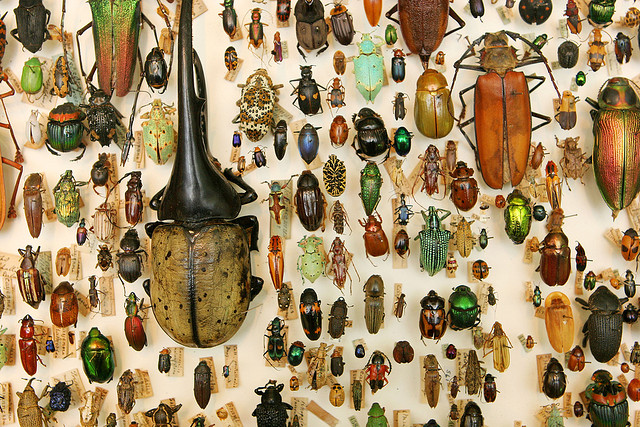Y chromosomes have come and gone many times during evolutionary history. Take beetles. When Heath Blackmon and Jeff Demuth modeled sex chromosome evolution in more than a thousand beetle species, they found the Y chromosome had independently evolved around 65 times in the suborder Adephaga alone. And as fast as this group evolved new Y chromosomes, it lost them at roughly the same pace.
But when it came to the other main suborder of beetles, the Polyphaga, Y chromosomes turned out to be unexpectedly stable. In this group, Ys seemed to be lost only about half as fast as they were gained.
So what’s the difference? Why are Y chromosomes lost at a much slower rate in Polyphaga?
In the June issue of GENETICS, Blackmon and Demuth, in the new GSA Journals “Genetics of Sex” collection, describe their intriguing findings and propose an explanation—the “fragile Y” hypothesis— that points the finger at the mechanics of meiosis.
The authors used the enormous diversity of beetles to gain a bird’s-eye view of sex chromosome evolution. Beetles are a rich source of phylogenetic data because there are so many species—more than in any other eukaryotic order. By combing the literature for published beetle karyotypes, the authors catalogued over 4000 species and classified them into three groups according to their sex chromosome system: XY, XO, or XY with distance pairing.
In XY systems, females carry two Xs and males carry an X and a Y. In XO species, the Y chromosome has been lost from the lineage and males carry only one X chromosome. The third category covers species that use an XY system but have evolved an unconventional mechanism for pairing the X and Y at meiosis. In distance pairing, rather than the familiar synaptic line-up of X and Y that allows crossing-over before segregation, the X and Y pair while at a distance from each other and do not recombine.
Using these data in combination with a phylogeny of 1,126 of taxa, the team estimated rates of Y chromosome gain and loss. Besides finding the curiously slow rate of loss in Polyphaga compared to Adephaga, they noted another striking difference between the suborders: none of the Adephaga species in the study used an XY distance pairing system, while 60 percent of Polyphaga species did. This pattern inspired the authors to develop the fragile Y hypothesis.
It is well known that Y chromosomes (and the female heterogametic equivalents, W chromosomes) are prone to decay, losing genes over time. This deterioration is thought to be partly caused by selection to suppress recombination between the X and Y. Reduced recombination helps maintain linkage between the sex-determining region and alleles that are beneficial in one sex but detrimental in the other.
In Blackmon and Demuth’s hypothesis, as the recombining (“pseudoautosomal”) portion of the Y shrinks, the opportunities for chiasmata formation also decrease. Because proper segregation normally depends on these crossover sites, the probability of losing the Y chromosome at meiosis should therefore increase.
But as we’ve seen, not all species depend on chiasmata for segregation of X and Y. The fragile Y hypothesis predicts that achiasmatic XY segregation mechanisms, such as distance pairing, should be favored as the pseudoautosomal region gets smaller. Therefore in lineages that evolve such mechanisms, the Y chromosome is much less likely to be missorted and lost. Consistent with this hypothesis, lower rates of Y chromosome loss were found among Adephaga clades that use achiasmatic pairing.
The significance of the hypothesis reaches far beyond beetles. Among mammals, the eutherian species with the smallest pseudoautosomal regions seem to have repeatedly evolved either achiasmatic meiosis or Y chromosome loss, exactly as the fragile Y hypothesis predicts.
This study, the largest of its kind, shows that the dizzying abundance of beetle species can provide important insights into sex chromosome evolution. Higher resolution genomic approaches will have even greater power to reveal the fine details of the comings and goings of sex chromosomes and the many evolutionary forces that drive them.
Blackmon H. and J.P. Demuth (2014). Estimating Tempo and Mode of Y Chromosome Turnover: Explaining Y Chromosome Loss With the Fragile Y Hypothesis, GENETICS, 197 (2) 561-572. DOI: http://dx.doi.org/10.1534/genetics.114.164269













